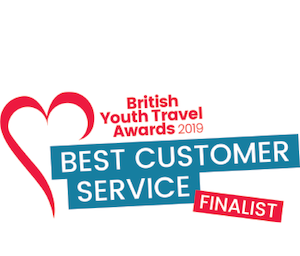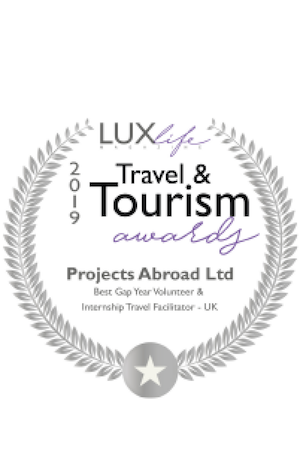For as long as I can remember I have been fascinated by developing countries and how different their lifestyles are to ours in the western world. I visited Kenya a few years ago on a tourist package, but this time around I wanted to experience real life as a local person.
So as a trained teacher I decided to have a break from the stresses of work in England and take my skills across the globe - and what a good decision that was. Teaching for a month in Kenya opened my eyes to a different way of working completely, not to mention the out-of-work experiences that I enjoyed too.
Arriving in Kenya
Before beginning my teaching placement I was to spend two weeks as a conservation volunteer at Kigio Wildlife Conservancy near Naivasha. Having never done anything like this before, I didn’t really know what to expect or how to prepare for it. I needn’t have worried as Projects Abroad took care of everything for me.
I was met by staff member Paul at Nairobi airport who was so friendly and relaxed that any nerves I had soon disappeared. Throughout the two-hour journey to Kigio I was glued to the window totally mesmerised by the beautiful landscapes we were passing. Dry savannah with green acacia trees and rolling hills stretched for miles, looking wild yet peaceful at the same time. As I was transferred into a safari jeep for the final leg of my journey, it really felt like I was in the film the Lion King.
Driving down the bumpy path to my new home we passed giraffes, zebras, impala and baby warthogs, all of whom would become familiar to me in the next few weeks. After being introduced to the other volunteers and staff I was fed and able to shower before crashing into bed exhausted and excited about my time ahead of me.
My Conservation Placement
Living and working at Kigio Wildlife Conservancy is one of the most special experiences of my lifetime. Waking up each morning to the sight of zebras or deer in the garden was something I never grew tired of. In my short time there I was able to help with a variety of tasks including giraffe identification, bird-watching, invasive plant removal, road-building, mapping and bio-mass sampling. I even began working on a power-point presentation to be used in local schools to educate future generations about the importance of conservation work.
Living in the middle of nowhere meant I had to quickly get to know the other volunteers at the placement including the very talented chef and local trained rangers. Most evenings were spent enjoying Kenyan food, playing cards or monopoly, reading, chatting or listening to music. Days were split into morning tasks and afternoon tasks and we worked in different teams for each, meaning that no two days were the same.
My most memorable experience from my time at Kigio was when a poacher was caught red-handed in the middle of the night by the rangers for digging a hole under the electric security fence and killing one of the warthogs in the park. Watching him being arrested by the Wildlife Police was a drama I’ll never forget and then hearing that he had been jailed for several years - and all for the price of 1000 shillings (about £10) which is what he would have been paid for the warthog meat. Two weeks only gave me a taster of the wildlife Kenya has to offer, but I feel so lucky to have experienced the beauty and nature of Kigio Wildlife conservancy. The memories (and thousands of photographs) will stay with me forever.
After two weeks of living the wild but quiet lifestyle, I was then thrown into a different type of wild lifestyle, life in the bustling city of Nakuru. Arriving by matatu with Sam from Projects Abroad on a dark evening in the rain my first impressions of Nakuru weren’t great. The matatu station was crowded, noisy, smelly and dirty and everyone around me was speaking Swahili which I couldn’t understand.
I eventually made it to my host family’s house in a nice, quiet and safer suburb of the city called Naka, where I received a warm welcome from my host mother Faith. I was shown around and introduced to all members of the family, including her husband, sister, children Levi (7 years old), Amanda (2 years old) and nanny/home-help. Similar to my very first night in Kenya I ate dinner, showered and fell into bed exhausted but excited about the next step of my journey.
Living with a host family enabled me to experience the true life of a Kenyan. My host mother worked away from home during the week so the nanny Eunice cooked, cleaned and generally cared for us. She taught me how to cook traditional dishes, how to hand-wash my clothes properly and showed me the best African soap operas to watch on T.V. I also spent some time in the evenings playing games with the youngest child or helping the eldest with his homework. He even began helping me to learn Swahili too.
My Teaching Placement
Part of living in Kenya involves adopting an “hakuna matata” (no worries) attitude to whatever situation you find yourself in. For example, I expected to be teaching at a large public school, however, when I arrived in September the whole of Kenya was experiencing a teacher strike where all the public schools in the country were closed. They were striking over pay and I understand why as I worked out that the average public teacher was getting paid roughly the same amount in a year as I would get paid in a day as a substitute teacher back in England.
Luckily Projects Abroad were able to place me straight into a private school as all of these had remained open. Walking into my classroom for the first time at Hill Valley Academy I noticed the walls were plain and bare, there was hardly any furniture except two old-looking wooden tables for working at and four rows of long wooden benches for the children to sit at. There was absolutely no resources apart from a blackboard and the children simply had one tatty looking exercise book and a pencil each (that they had to provide themselves).
The realisation of what I was letting myself in for suddenly hit me, as I was going to have to rely purely on my imagination and creative skills to begin teaching these children English. Suddenly my full stock cupboard, interactive whiteboard and colourful wall displays back home seemed a long way away!
However, I soon rose to the challenge and relied on pictures and gestures to communicate with the class. There was no evidence of small group work, role-play activities or practical learning. Pupils simply repeated words and phrases after the teacher, then copied them down into their exercise books over and over again.
After nearly a week, public schools opened again and I was able to go to my original placement of Crater Primary School. I worked there for three weeks in “top class” (the equivalent to Year 1 in the English system) and had pupils in my class ranging from age 4 to 14. I was supporting the regular class teacher, although sometimes she would not turn up, leaving me to take the class on my own.
I enjoyed this challenge and very quickly grew attached to the many characters in my care. We had some favourite songs like “wind the bobbin up” and games like “duck duck goose”. Despite many differences I noticed that fundamentally children are the same across the world and I was very sad to say goodbye to everyone at the end of my time.
Weekend trips
There was never a dull moment during weekends. Along with other volunteers I managed to visit Lake Naivasha, Nairobi, Mombassa, Menengai Crater, Lake Bogoria and Lake Baringo. My favourite trip has to be to Hell’s Gate National Park - nothing beats the adrenaline rush of cycling past a herd of buffaloes or stopping to let a baboon cross the path. However, if you prefer a more relaxing weekend there is plenty to do in Nakuru too. Enjoy a slice of home-made cake while catching up with friends in the internet café, visit the gym, join a church service or shop in the Massai market.
Kenya is a beautiful and colourful country. Despite living at a much more relaxed pace of life (“Kenyan time”), you cannot fail to fall in love with its friendly people and catch that contagious happy feeling. Go for it - you won’t regret it.

Are you interested in joining this project?
If so, one of our experts can help.
Contact Us on:
Esta es una anécdota personal de la experiencia de un voluntario en el proyecto. Tu experiencia podría ser distinta, pues nuestros proyectos se adaptan constantemente a las necesidades locales y las metas que tengamos. Las estaciones del año también pueden tener un gran impacto en tu experiencia. Si quieres saber más sobre lo que puedes esperar del proyecto, te recomendamos contactar a nuestro personal.
Nuestras acreditaciones


















